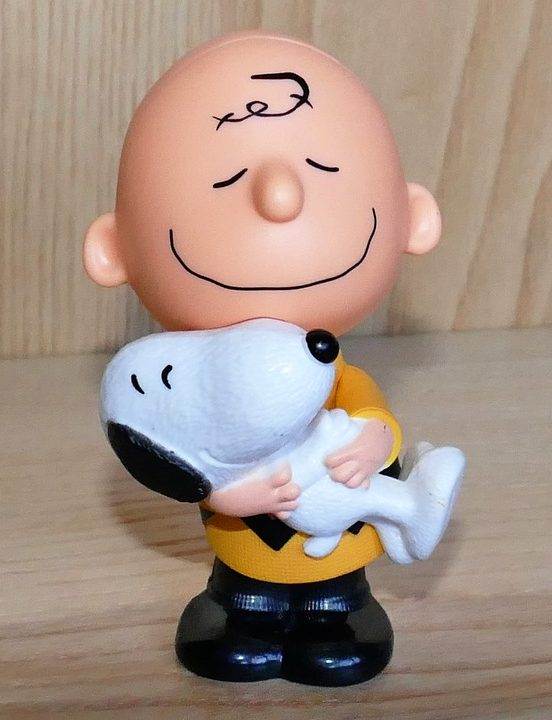
You’re a Funny Man, Charlie Brown
Melissa Woodland
 My children (ages 8-11) and I attended the Saturday matinee performance of You’re a Good Man, Charlie Brown at the Folger Auditorium on the campus of Southern Wesleyan University. The audience was a good blend of SWU students, young children, and older patrons. I was not sure that my children would even know who Charlie Brown is, or, with all the new action-packed and bright cartoons now, if they would be bored. Happily, I discovered that they do know who Charlie Brown is and they were not at all bored, and neither was I.
My children (ages 8-11) and I attended the Saturday matinee performance of You’re a Good Man, Charlie Brown at the Folger Auditorium on the campus of Southern Wesleyan University. The audience was a good blend of SWU students, young children, and older patrons. I was not sure that my children would even know who Charlie Brown is, or, with all the new action-packed and bright cartoons now, if they would be bored. Happily, I discovered that they do know who Charlie Brown is and they were not at all bored, and neither was I.
Charlie Brown, based on Charles M. Schulz’s comic strip “Peanuts,” and rewritten for the stage by Glark Gesner, surprised and delighted the audience. Although the play itself did not follow a singular plot, it was reminiscent of Schulz’s comics strips themselves, with glimpses into each of the character’s lives. This quick-paced production was engaging and stayed true to the original characters in both stage design and costume. Snoopy’s dog house, a brick garden wall, a pint-size grand piano, a couple of park benches, and a few modest clouds suspended in the sky, completed the simple yet tastefully effective set. The costumes were spot-on with color and style; however, the hairstyles were a departure from those in the movies and comic strips.
Anthony Evett, as Charlie Brown, effectively portrayed his character’s self-doubt in both his delivery of lines and his slumped-shoulder posture. Despite his insecurities, Charlie Brown manages to find the proverbial light at the end of the tunnel. Evett keeps his character relatable and likable.
Britney Fernandez, as Lucy, successfully captured the character’s ego and inflated self-importance, singing her parts with a large and loud volume and stomping around the stage. Fernandez portrays Lucy’s brassy and sometimes harsh personality with little effort. Her lounging position on Shroeder’s pint-sized piano was a perfect replica of Lucy from the cartoon movie series.
Sally’s role, played by Ashley Lamos, seemed to be the largest role in the production. Lamos’s Sally was in almost every scene displaying Sally’s five-year-old, high-strung, charismatically argumentative, and precocious personality. Sally is the “squeaky wheel who gets the grease,” venting her frustrations over everything from her poor grade on her wire coat-hanger art project to her uncooperative jump rope. Lamos brings most of the laughter from the audience with her bubbly and bouncy performance.
Linus, portrayed by Zachary Ford, holds tight to his signature blanket while spouting out beyond-his-years factoids. Ford was unafraid to draw on his inner child and suck his thumb throughout the play. Obsessed with Beethoven, Schroeder is consumed with playing his music, advocating for a national Beethoven holiday, and celebrating his birthday. Ryan Hendricks effectually depicts pianist Schroeder’s day dreamy quality.
Snoopy’s costume was compiled of plain white sweatpants and sweatshirt with a large black spot on the back. White converse sneakers, a set of ears, a painted on nose, and the occasional sunglasses complete the effect. Tad Day, in the role of Charlie Brown’s beagle, Snoopy, gives an enthusiastic interpretation of the famous pooch. Day is unafraid to literally get down on his hands and knees to provide the audience with the feeling that they are watching a real dog onstage. The famous “Red Baron” scene is recreated, much to the audience’s delight. Snoopy’s number, “Suppertime” was the highlight of the show, with Snoopy singing joyfully singing about the joys of having his dinner bowl filled. Long-time sidekick, Woodstock, silently played by Miranda Hill, adds a complimentary element to all of Snoopy’s scenes. Hill uses her posture and facial expressions to speak for her as she flutters after Snoopy. Hill adds much laughter to the already comical scenes.
Providing background for many of the musical numbers were: ever-filthy Pig-Pen, tomboy Peppermint Patty, sidekicks Marcie and Violet, and the object of Charlie’s crush, the Little Red-Headed Girl. Although these were not speaking roles, these characters added to the cast’s dynamics with their colorful costumes and harmonizing back-up vocals. They also added movement in the song and dance numbers.
An element I missed in this production was Charlie Brown’s signature “good grief,” only said once by Linus in the entire two and a half hour play. The upbeat musical scores were consistent with those heard in the cartoons but peppier. The use of the auditorium walkways and the entrances to the side hall, as well as the entrance to backstage were utilized, enlarging the stage area. Kite strings leading from the character’s hands up into the unseen sky, draw on the viewer’s imagination. Overall, this production was a successful recreation of a well-loved classic.
Based on the comic strip ”Peanuts” by Charles M. Schulz; directed by Heather Haithcock; music, book and lyrics by Clark Gesner; additional dialog by Michael Mayer; additional music and lyrics by Andrew Lippa; choreography by Michael Fulford and Ashley Lamos; set design by Ted Bashlor; costumes by Gloria Bell, Judy Black, Jackie Bryant, Maxine Bowyer, Paula Crook, and Sally Wood; lighting by Will Chandler, Jake Mealy, and Cameron Cromer; sound by Ryan Kivett and Danielle Broome; scene design, Joy Ellison; stage manager, Chloe Bryant; stage assistant, Ethan Cashwell; sound designer, Scott Rowell; and costume coordinator, Carol Sinnamon.
CAST: Tad Day (Snoopy), Miranda Hill (Woodstock), Anthony Evett (Charlie Brown), Ashley Lamos (Sally), Britney Fernandez (Lucy), Zachary Ford (Linus), Ryan Hendricks (Schroeder), Cameron Baker (Pig-Pen), Katy Dyches (Little Red-Headed Girl), Shelby Murray (Peppermint Patty), Kaitlin Mosley (Marcie), and Lauren Schaupp (Violet Gray.)